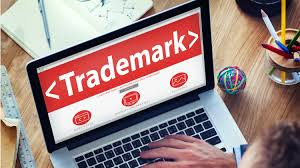Trademarks are essential to
businesses that utilize them for a range of reasons. But, the trademark
employed by a company frequently becomes the brand that is remembered by the
public. This is vital in transactions between the consumers and organization.
The only phrase or symbol of
words typically explains to someone what the company stands for, what it means
to the society and what products or services it sells. Several businesses that
use a trademark registration in this
way turn out to be household names, and might be found all through the nation.
Maintaining the trademark security is essential in keeping the brand in the
memory of the client and customer.
Trademarks are intellectual
property, and are essential to both the business world and to those imaginative
enough to create them. It is most excellent to keep these valid and up to date
through the steps essential to follow. This means few documents being filed at
usual intervals after the trademark has been registered at first. But, if
the individual or business fails to do so, the intellectual property is
cancelled and no longer applicable in the United States. This means that the
protections offered to the company for the trademark are revoked. Any individual
at that point may use the phrase, brand or symbol for another organization
without any effects.
Why Renew a Trademark?
One of the most excellent ways to
guard the brand of a company legally is through maintaining and renewing a
trademark. This is essential that the trademark is defended against breach and
violations. This is possible through keeping it active, recruiting a lawyer to look
for lawful action and renewing the intellectual property at or prior to
expiration. But, it is when the trademark is no longer active that somebody
else may use it without result. A company can take the sign or expression, or a
person might damage or weaken the brand. To stay in the memory of public, this must
not occur.
Renewal Procedures
For legitimate trademarks, the owner
is necessary to complete forms of Section 8 Affidavit. This is also known as an
Affidavit of Use. These should be filed in time or soon after the trademark was
registered by the owner initially. The time restriction ends prior to the sixth
year of use. Another filing should be completed within the anniversary of ten
years from the original registration. Another document procedure is needed
called a Section 9 Renewal. This application must be done and sent in each
ten-year registration date. With these processes finalized, the trademark is rewarded
another decade of life. But, any omitted documentation or procedure could result
in a revocation of the trademark without succeeding rekindling.
Usual Issues
There are problems that might be made on forms that must be avoided if at all potential. A legitimate email address is vital because of emails being provided by the office for upcoming deadlines. The present owner of the trademark should file the documents for Section 8 and 9 or face cancellation. This person might transform, but this must be updated with the offices. This is skilled through the Assignment Division. If it is not done, the trademark office and the applications will have wrong information.














